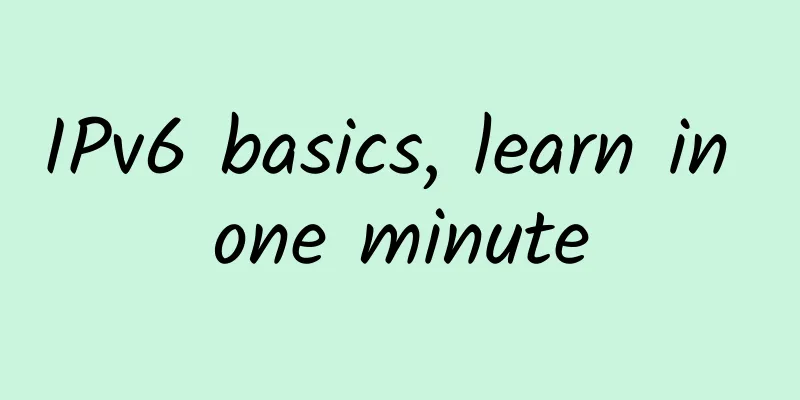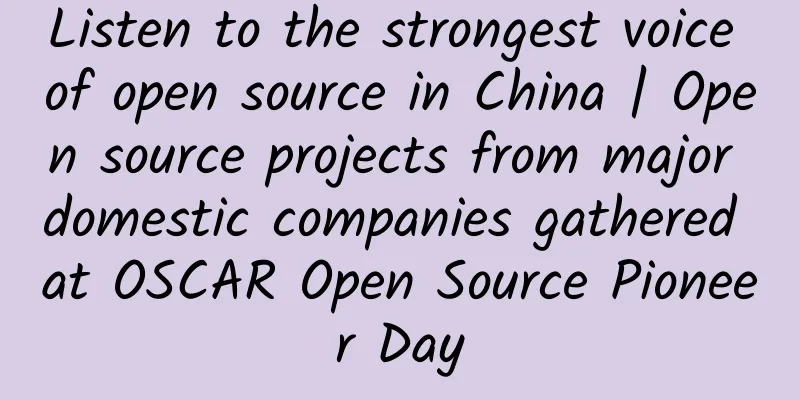Five IoT business models that will make you profitable

|
IoT products have the ability to collect data, creating unprecedented innovative business models. In this article, I will introduce you to some of the most interesting IoT business models currently. I recently attended a very popular IoT conference in Silicon Valley, and during one of the presentations the keynote speaker asked the audience, "Who among you is working on IoT products today?" About two-thirds of the audience raised their hands. Then he asked, "Whose IoT products are making money today?" This time no one raised their hands.
This small interaction verifies the fact that many companies are joining the entrepreneurial wave of IoT products, but there is no clear profit model, or more simply, there is a lack of a way to make money from IoT products. IoT Decision Framework 1. Subscription Model One of the biggest benefits of connected devices is that you can generate recurring revenue. Instead of a one-time transaction, you can offer a subscription model where you can charge customers for ongoing services. If your IoT solution is a software service, then a subscription model will benefit you greatly. Taking the SaaS model as an example, you can make your product profitable through monthly subscriptions, paid upgrades, or even "freemium" (if your strategy supports it). Another advantage of this IoT business model is that it helps you build good relationships with your customers. In the past, hardware manufacturers rarely interacted with customers once they sold their products. IoT products break this pattern. As your devices collect more user data, you will be able to understand your customers better and provide more valuable services based on their specific needs. Some common IoT applications that use the subscription model include “monitoring services” and “preventive maintenance services”. 2. Service Model The service model is a very innovative solution for IoT products, allowing customers to purchase services rather than the product itself. Remember someone said that "people no longer buy drill bits, they buy holes made"? Well, the same is true for the service model. Customers pay for the "hole" they need, not the drill bit. For example, a water pump manufacturer used to sell water pumps, and they measured their performance by the number of water pumps sold in each quarter. But in fact, sometimes customers don’t want to buy water pumps, they just need to transfer water from A to B for some purpose. For example, they need water for cooling, watering plants or generating hydroelectric power, which is the real need of customers. Now imagine an experienced pump manufacturer who produces an upgraded pump that monitors how much water the pump pumps. Now the manufacturer can discuss with the customer what they care about: the amount of water pumped (analogous to a "drilled hole"). In this case, the customer is not buying a pump, but can pay for the amount of water they need. They are also paying for the ultimate service, which is the cost of the pumping service. Companies can use a service model as a product sales model. For example, a manufacturer can decide whether to lease or sell a water pump. If the customer is only interested in the service, then they may not want to have a depreciating asset (the water pump) on their balance sheet. Therefore, only letting them pay for the service instead of paying for the water pump itself can reduce the customer's headache of purchasing an expensive device. 3. Asset Sharing Model A major consideration for customers when purchasing expensive equipment is whether they can maximize the use of the equipment, which provides an opportunity for asset sharing. We have seen the successful application of this model in shared bicycles and shared cars. Imagine: If my car is parked at my doorstep 90% of the time, why do I need to pay the full price of the car? I only pay for the expenses incurred when I use the car. The Internet of Things has the power to solve this problem, and we’re already starting to see shared solutions in the form of driverless cars, virtual power plants, shared drones, and more. This IoT business model puts the extra or surplus of your product into the market. The ultimate goal is to maximize the usage of your product through multiple customers. In this way, each customer can enjoy the service at a lower price than if a single customer fully owns your product, and you can also gain market share faster. I have the privilege of being involved in this shared business model where the company provides smart batteries to commercial buildings; the smart battery provides power to the building, and if they have excess power, they can sell that excess power to the grid. In this model, the smart battery is a shared asset between the building and the grid. This approach allows our customers to get our product at a lower price because they don't have to bear the cost of the entire product, whether they use the excess energy or not. You might be thinking, "Why not just install a smaller battery?" That's a great question. But sometimes, they don't make smaller batteries (or smaller pumps or turbines, etc.) because most of these products are so complex that you can't get custom sizes. So, you can either throw away that extra capacity or you can figure out a way to make money from it, and of course, smart devices can help you. 4. IoT products as a channel platform to sell other products Your IoT product can be a conduit to sell other products. In this model, you might sell your IoT product below cost because your goal is to get the product in the hands of customers so you can sell other products. This approach reminds me of Ford’s early strategy, where the plan was to make money not from the cars themselves, but from parts and services. Amazon is doing this with its Amazon Dash buttons. These “internet of things buttons” come pre-configured to order a specific product, like detergent or toilet paper. When you press the button, it orders that item from Amazon and has it delivered to your door within a few days. Amazon's goal is to provide "contextual shopping", which means that you can order products immediately when you need them. For example, the "IoT button" with the function of ordering laundry detergent is attached to the washing machine. When there is no laundry detergent, you can press the button at any time and Amazon will deliver the goods directly to your home. By introducing this clever IoT button, Amazon is helping you remove the obstacles when reordering any product. In this case, Amazon Dash itself is not a source of income, it is just a tool to sell other products in the Amazon catalog. We are seeing more and more manufacturers adopting this approach to selling consumable products. Printer manufacturers are creating “smart printers” that automatically order ink when they are running low; we have a smart water jug that automatically orders new filters, and there are many other examples. 5. IoT becomes a tool for data monetization The value of IoT lies in the benefits you can get from the data you collect, and data has become the most valuable resource in the world. The question is who can benefit from the data? Think about companies like LinkedIn or Facebook. They collect a lot of data from everyone (usually for free), and while they use the data to provide some services to us (users), the real value lies in using this data to promote their products and services for advertisers and other third-party companies. In this case, LinkedIn or Facebook is just a tool to collect data and provide it to advertisers. The same model can be applied in IoT, where your product can provide services to your end users, while collecting valuable user data, which can then be sold to third parties. With this approach, you can provide your IoT devices to customers for free, quickly gaining enough users, with the goal of using as many devices as possible to collect data. The more devices you have, the more attractive your data will be to third parties. There are many examples of IoT products using this model, such as smart thermostats installed in buildings to monitor their energy consumption. Building managers can benefit from this data, but utilities or other analysts may pay large sums of money to collect and aggregate data from thousands of buildings. The same is true for devices that monitor driving habits; they provide you with some interesting knowledge, but the biggest beneficiaries are the insurance companies because they are able to understand the driving habits of drivers through the data. This IoT business model can become your most important business development direction, which means that when you start, your main goal is still to solve the needs of end customers, but later, you can decide to make money from the collected data. As long as you let your customers know how their data will be used and ensure that their privacy is not violated, these two models will not conflict with each other. It is important to note that sharing data with other companies or organizations is not a supplement to existing IoT solutions. It is a complete product solution. You need to understand the needs of third-party customers and evaluate whether it will affect your infrastructure. I recommend that you use the IoT decision framework to see how this new feature will affect your existing products. Conclusion As a product manager, it is important to understand how your product adds value to your customers and your company. Therefore, it is important to have a clear product monetization strategy. The good news is that IoT products offer many innovative business models for your company to monetize. |
<<: What is the Internet? — Talking about the development of the Internet
>>: Discussing the five key technologies for building 5G
Recommend
STP Spanning Tree Protocol Working Principle
In a complex network, loops are inevitable. In ad...
LigaHosting: Netherlands/Sweden/Moldova/Thailand/Dallas VPS monthly payment starts from 1.99 euros
LigaHosting.ro is a Romanian hosting company that...
Current status of 5G development: In addition to the "fast Internet speed" in the eyes of ordinary people, what other development prospects are there?
When it comes to 5G, people don’t know much abou...
Deepin Technologies was invited to attend the first Feiteng National Ecosystem Partner Conference
On December 19, 2019, Hangzhou DPtech Co., Ltd. (...
What problems do HTTP/1, HTTP/2, and HTTP/3 solve?
What problems does each generation of HTTP solve?...
spinservers: $69/month US server - E3-1280v5, 32G memory, 1TB NVme hard drive, 10Gbps bandwidth
spinservers recently offers special discount code...
AkkoCloud newly launched CN2 GIA line in London, UK, with annual payment starting from 299 yuan and 10% discount for monthly payment
AkkoCloud sent new product information. This mont...
Four Best Practices for Network Cable Management
If a cabling project is to be successful, you fir...
GSMA: By 2030, 5G will contribute more than $600 billion to the global economy
On February 24, the 2021 Mobile World Congress Sh...
H3C Ao Xiangqiao: SD-WAN will eventually move towards a high-level self-intelligent network
SD-WAN became a "hot word" in China in ...
Following ZTE and Huawei, China Mobile is again caught up in the "national security threat" scandal in the US
Trump reportedly blocked China Mobile from enteri...
spinservers: $89/month - E3-1280v5, 32G memory, 1TB NVMe hard drive, 10Gbps bandwidth server
spinservers has released the latest July promotio...
What is Wi-Fi 6?
Wi-Fi plays an indispensable role in modern peopl...
Huawei Enjoy 10S released with a 48-megapixel ultra-wide-angle AI triple camera priced at RMB 1,000. Are you tempted?
This afternoon, Huawei released a thousand-yuan m...
Can 5G messaging become a moat for operators in the digital economy era?
The completion of the project of "5G Message...





![[Black Friday] Sharktech: 50% off on all cloud products, 10Gbps unlimited traffic server $349/month-2*Gold 6148/128G/2TB NVMe/Los Angeles and other data centers](/upload/images/67cabcf5b13e5.webp)



